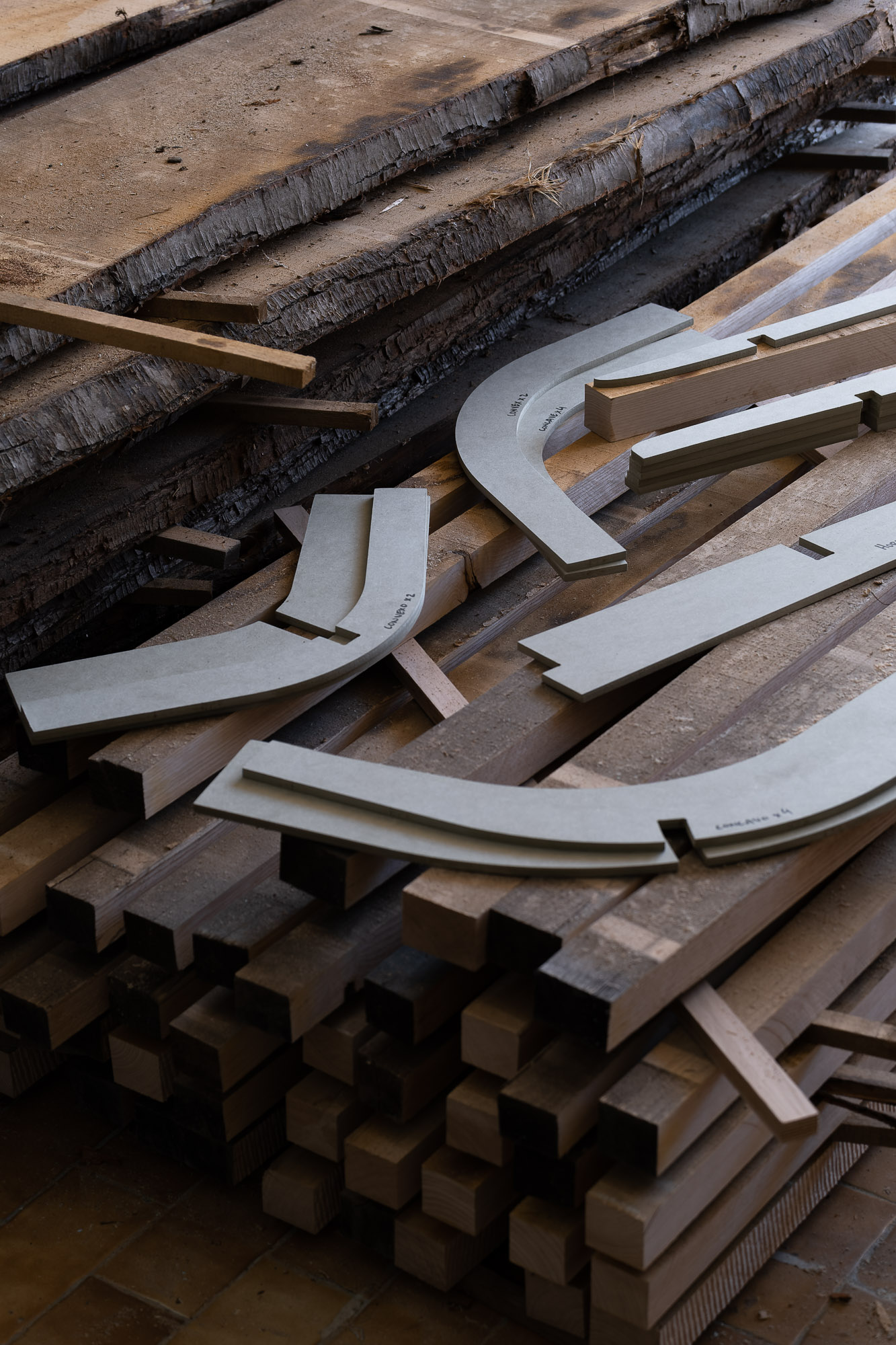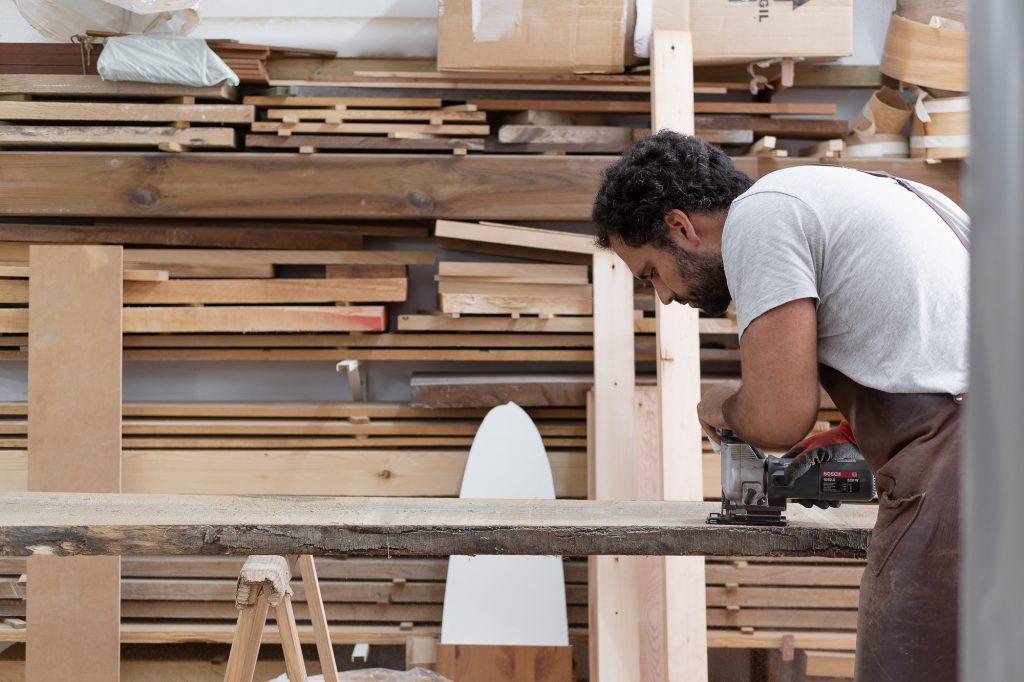/Jul
2022
José Mateus, from Nó Marceneiros, tells us about himself and the making of the wooden panels.
What are your earliest memories of working with wood?
I was a navy scout. Besides all the activities common to all scouts, we did a lot linked to the sea – things like building wooden boats and canoes. I have wonderful memories of these early challenges. But I didn’t consider carpentry from the beginning; for a long time I didn’t know what to do, professionally. I studied design at Lisbon’s Faculty of Fine Arts, and later on I taught plastic arts. Meanwhile, I thought about being a Jesuit priest, I moved to Coimbra.
When I returned to Lisbon, my father had opened a small carpentry studio. He did repairs, mostly. My father had worked all his life in something completely different, but he had the passion. His grandfather had been a carpenter, he had many memories of him and his craft, he grew up with these references. I remember, for instance, being small and my father wanting to build a mezzanine in the garage.
I started to work with my father, and progressively, I dedicated more and more time to carpentry. I wanted to learn more, get better at it. Later, when I already had an atelier of my own, my father stepped back but my brother joined me – he became instrumental in the project.







